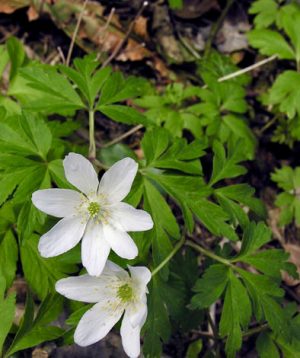What Is Ancient Woodland?

Any woodland which has remained as woodland for the last 400 years (since 1600) is described as “ancient woodland”.
About one fifth of the UK’s woodlands are thought to be ancient woodlands. However most of Britain’s woodland has been managed for a long period and so there are virtually no woods that are totally undisturbed by man. Ancient woodlands include these types:
- ASNW, Ancient Semi-Natural Woodlands, which contains native broadleaves;
- PAWS, Planted Ancient Woodland Sites, where planted trees, often coniferous, have replaced the earlier tree species.
Ancient woodlands are of particular interest because they are more likely to contain certain species of plant and archaeological remains (such as earth banks and ditches). Certain plant species are indeed often used to prove, along with historical records, that a woodland is at least 400 years old. These “indicator species” have been painstakingly established by taking the flora of woodlands already known to be ancient and analysing patterns to determine which species are most likely to occur in older woodlands.
 Typical indicator species for ancient woodland are plants that seldom occur outside woodland, that are capable of growing in shade and are slow to colonise. Working out which these species are is very specialised work and if you find a single indicator species you shouldn’t take that as proof of anything – these are, after all, only indicator species. However, some typical examples of ancient woodland indicators are: golden saxifrage, wood-sorrel, wood anemone and wild daffodils.
Typical indicator species for ancient woodland are plants that seldom occur outside woodland, that are capable of growing in shade and are slow to colonise. Working out which these species are is very specialised work and if you find a single indicator species you shouldn’t take that as proof of anything – these are, after all, only indicator species. However, some typical examples of ancient woodland indicators are: golden saxifrage, wood-sorrel, wood anemone and wild daffodils.
Ancient woodland has been in steep decline for 80 years and during that time almost half of it is thought to have been lost – partly to plantations and partly to agriculture. The tragedy of UK woodlands in the 20th century was that so much of the destruction was caused directly by government actions – grants and advice that encouraged converting old woodlands into agricultural use and promoted the coniferisation of ancient woodlands. Fortunately that has now stopped and the Forestry Commission and other government bodies are actively encouraging the conservation of ancient woodland sites. Indeed having a site identified as ASNW or PAWS is helpful in getting grants for management and conservation.
Much of the ancient woodland in the UK has been managed by coppicing (see https://www.woodlands.co.uk/blog/conservation/coppicing-an-introduction/ ) and some by pollarding.
What tips would you give for identifying ancient woodland? Please use our comments section to help others by sharing your experience….
Comments are closed for this post.
Discussion
This may be a silly question but I would like to know:- Before man there was a Great Forest covering the uk from one tip to the other. Would it be possible that parts of this forest still exist?
I was talking with Patrick Roper yesterday, who pointed out the rather obvious -the soil in the wood is what is important – the soil is ancient!
He also said that maps going back so far were sometimes not reliable – so worth looking a a few different ones to be sure that what we have is the truth!
Patrick has an excellent blog
[…] What Is Ancient Woodland? Any woodland which has remained as woodland for the last 400 years (since 1600) is described as “ancient woodlandâ€. […]

Well ….. in a sense,
The Caledonian forest / woodlands represent a unique ecosystem in the British Isles – they are remnants of the vast wilderness that once existed here; and across on the Continent – as boreal coniferous forest.
See http://www.woodlands.co.uk/blog/flora-and-fauna/caledonian-forests/
and also
http://www.woodlands.co.uk/blog/flora-and-fauna/ancient-woodland/
Blogs
28 July, 2014